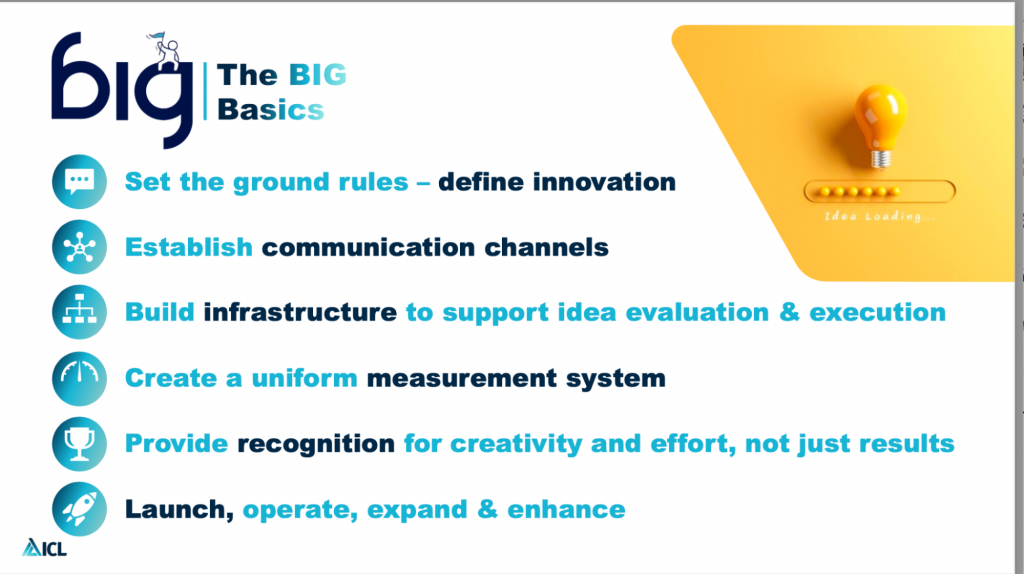Innovation: The Force Behind Human Development
The world is undergoing a technological revolution that is transforming our daily existence beyond all recognition. In the last few decades, we’ve experienced tech developments comparable to the invention of the printing press and all the combined advances of the industrial revolution.
Big data and cloud storage, 6G internet, the Internet of Things, AI, and other new technologies are driving a new agricultural revolution, a transition to clean and sustainable energy, life-changing advances in medicine and healthcare, and a new digital economy with its own cryptocurrencies.
Innovation is nothing new. The innate human capacity for innovation ensured our survival as a species when all the odds were stacked against us. The ability – and burning desire – to innovate carried us out of the stone age, into agriculture and settled urban living. and through millennia of struggle to the 21st century.
The big difference today is the unprecedented speed and scale of scientific and technical advancement. Companies that can actively develop a culture of innovation, and give innovators the freedom and resources to unleash their creativity, unconventional thinking, and problem-solving skills, are a strategic bound ahead of their competitors.
In the rapidly changing global 21st-century economy, even a small technological edge can be leveraged into a massive competitive advantage that leads to market dominance. However, it’s not enough simply to innovate. Ground-breaking ideas either go nowhere (or are snapped up by the highest bidder) when companies lack the experience, expertise, and resources to turn ideas into projects and products.
Innovation: The Insights That Set ICL Apart
ICL has a significant inbuilt advantage over most other companies. Its earliest predecessors were small pioneering ventures that set out to explore and develop Israel’s harsh desert wilderness. As the State of Israel was established and consolidated, resources were limited, danger was everywhere and improvisation was a necessity.
ICL survived and prospered, using innovation and ingenuity to overcome every conceivable obstacle – difficulties that most companies simply never encountered. ICL’s biggest asset has always been its people and their unlimited potential.
Today, ICL is a global conglomerate and a world leader in several fields. Respect and understanding of innovation are built into ICL’s corporate DNA – as is the knowledge of how to nurture and channel innovative energy.
ICL’s BIG: Business Innovation for Growth Internal Innovation Accelerator
The biggest enemy of innovation isn’t necessarily rigid conservatism, an authoritarian hierarchical structure, or official apathy: often it is simple complacency. The moment that any organization starts to take pride in its track record for innovation, and assumes that innovation is automatic, it is in danger of stagnation.
Too many companies pay lip service to adopt the concept of innovation but fail to actively engage with employees and to encourage and reward original thinking. They also lack the structural mechanisms that allow ideas to be presented, evaluated, and implemented.
The ICL Internal Innovation Accelerator (BIG) is designed to harvest good ideas from the ground up. All employees – regardless of role – who see an opportunity for innovation are encouraged to submit their ideas for appraisal.
Since the project’s creation, an impressive number of initiated projects reach a full and successful conclusion. BIG facilitates innovation in an organized and systematic manner, allocating resources and expertise, quantifying progress via a unique BIG index, and driving growth.
Eduard Croitoru, VP of ICL’s Corporate Initiatives, joins us to explain the evolution of BIG and how it turns raw ideas into profitable products, processes, or new ventures, and explains how to harness the power of innovation for continuous growth.
Welcome Eddie! What can you tell us about BIG and its role with innovation at ICL?
Before I talk in detail about our internal innovation accelerator – which we usually just refer to as BIG – I’ll give you a few facts and figures that deliver instant insight into the scale and initial success of the program.
As of March 2023, we’ve received an astonishing 5,158 ideas via our online employee platform. 1,708 of these were selected to become live projects and 1,305 projects were completed. Those projects yielded a realized annual operating income contribution to date of $295 million – and that’s just the beginning!
It’s important to realize that we’re talking about a program whose results already run into hundreds or millions of dollars. That’s new income that would not otherwise have existed.
That certainly puts the BIG project into perspective! What was the thinking that led to its creation?
In 2019, ICL’s CEO Raviv Zoller approached me with a significant task: devising an effective solution for managing innovation within our organization. Until that point, innovation efforts were mostly siloed, with no concrete corporate-level monitoring or visibility into their progress.
I had identified a number of factors that limit innovation and lead to complacency and stagnation. I was looking for a way to tackle them with a single stroke.
The first problem is that where a spirit of innovation does exist, it’s usually channeled within these isolated silos. Even small and medium-sized organizations can suffer from limited global connectivity and limited communication and collaboration between divisions. When you have an international conglomerate, the problem is on an entirely different scale.
Sometimes, teams that work in the same building might as well be on different planets for all the non-routine communication that exists between them. We also see an (understandable) focus on managing existing portfolios, rather than ideation and execution. I’ve identified several other barriers to ideation:
- The “Not invented here” syndrome.
- Budgetary inflexibility that inhibits innovation.
- Certain mid-management members discourage junior employees from contact with senior management.
- The unfocussed idea that innovation is positive and desirable, but not urgent or essential.
That’s amazing! So what inspired ICL to take the leap forward and create the Business Innovation for Growth program?
The impetus came from a few directions.
Firstly, the understanding that we’re in a decade of momentous change and that innovation is essential not just for future growth, but to determine the direction of that growth. We have to enhance ideation, accelerate execution and improve collaboration. It’s not an option, it’s a core requirement.
We also place a huge value on our employees and their professional development. When you have thousands of employees, you have thousands of perspectives, combined with a wealth of experience and creativity. That’s a treasure trove of potential insights and ideas. We want our people to be excited about their work and to know that they have a unique ability to help steer the ship. We encourage our people to draw on their practical knowledge and daily experience and do the thinking.

A uniform measuring system also allows us to evaluate and compare units and create a scale of KPIs to ensure that we are meeting our targets. Comparisons generate healthy competition – and greater innovation – between units. Importantly, we always put the business units (BUs) first.
They have all the backup they need from R&D and Operational Innovation teams, but the BUs are the ones to actually implement and operate most of the innovative initiatives. Furthermore, more often than not, it is people from the BU that come up with innovative ideas that are then converted into profit-generating projects.
Are there particular strategies that make the program a success?
Leveraging my background as an auditor, I instinctively knew that if we wanted to prioritize innovation, we needed to establish a framework akin to our financial reporting practices and treat innovation the same way we treat our financial results. This realization paved the way for the birth of BIG.
I’ve drawn on my experience as a CPA to quantify, analyze and review performances. The senior management meets regularly to evaluate the progress of the project portfolio in black and red. Out of this massive project portfolio, the team drills down into every individual project and monitors its progress on a quarterly basis. A project is essentially an investment and we treat it as such. That’s a big part of why BIG is a major success.
The other reasons for our excellent results are related to the strong sponsorship we receive from the ICL’s senior leadership, as well as our persistence, endurance, our belief in ICL’s people, and the wide network of internal relationships we have established over the last three and a half years – and the sheer boldness of the venture in terms of size and scale.
The idea of applying a measurement system to innovation is really interesting. Can you expand on it a little?
Every management recognizes the importance of reviewing financial results on a quarterly basis, examining various metrics such as sales, expenses, profit trends, market conditions, etc. Inspired by this practice, I proposed applying a similar approach to innovation.
To ensure the success of our innovation efforts, it became evident that we needed a means to measure and evaluate results. However, a crucial question emerged: What aspects should we focus on during these discussions? We desired to review tangible outcomes, but determining what those outcomes could prove to be challenging.
We embarked on developing an entire measurement system that would assess innovation at the project level and subsequently consolidate the findings. This gave rise to the creation of the BIG index—an innovative and straightforward method I designed for assigning a numerical score to each project, allowing us to set effective goals, promote healthy competition, and easy measurement and comparison of results. It’s all about being precise and systematic and delivering a comprehensive picture of progress.
The BIG Index encompasses various key parameters such as time to completion, probability of success, expected operating income contribution, and development cost. These parameters serve as the foundation for evaluating each project.
However, the true strength of the BIG Index lies in its simplicity and its ability to condense this information into a single, comprehensive number. We made a conscious decision not to focus on absolute numbers, starting points, endpoints, volumes, etc. For our purposes, targets are preferable values based detailed projections, like NPVs.
To be able to efficiently track a huge portfolio of projects on a real-time basis, and pinpoint the important issues, it is crucial to focus only on a minimal possible dataset that can be updated frequently and still provide the necessary insights. In other words, gain sufficient information, to run an efficient process.
That’s why monitoring our progress towards the target, became more relevant than endlessly generating and updating multi-year projections. In a way, it’s the final destination that counts on these journeys, there’s a degree of flexibility in how we arrive there.
By aggregating the scores of all projects within a division, we obtain the division’s overall score. Furthermore, by consolidating the scores of all divisions, we arrive at the company’s score. This hierarchical approach allows for a holistic assessment of innovation performance at both the divisional and organizational levels, providing a clear metric to track and compare innovation efforts.
The BIG index works like a compass that tells us our current position and bearing in relation to our target.
We also realized that if BIG was to work, we’d need inbuilt transparency within the execution process, and key metrics for each project. Innovation is only ‘real’ when there is full performance accountability.
Do you have any valuable takeaways or additional insights from your experience with the BIG program that you would like to share with us today?
Definitely, the whole project is one big learning curve – which is partly why I enjoy it so much. Well, in no particular order…
Never underestimate the passion and enthusiasm for innovation among your employees. We had 5,158 ideas via our online platform. Over a quarter of these ideas were good enough (or immediately relevant enough) to be developed as projects and a similar number is currently under evaluation. That’s amazing, our front-line employees are generating exceptional ideas.
On a structural level, when you can quantify and measure innovation and open the process to evaluation, you supercharge progress. Once the artificial limitations and obstacles are swept aside, and a clear channel exists, innovation flourishes. The company culture changes and you start doing everything you need to be doing, not simply what you always did.
We took the first step towards unlocking creative potential at ICL and managed to already generate a couple of hundred million dollars in additional annual operating income. This is way beyond what I had hoped for!
More on the subject:
BIG: ICL’s Revolutionary Approach to Internal Innovation Accelerators
Meet ICL’s Open Innovation Landscape and Initiatives
Innovation Starts from Within
ICL and the Future of Innovation
The future of innovation at ICL looks promising as the company upholds its century-long tradition of innovation and original thinking. With a strong sense of purpose guiding innovation, ICL sets itself apart from other companies. By embracing the BIG program, ICL has unlocked the potential of its employees and fostered a culture of innovation, resulting in remarkable achievements.
ICL’s commitment to empowering employees, breaking down barriers, and fostering healthy competition among business units has proven successful in harnessing the organization’s untapped potential. The BIG program serves as an inspiring example for other companies, showcasing the transformative power of embracing ideas and implementing robust recognition, management, and measurement systems.
As ICL continues its journey as a hyper-innovative company, it positions itself to thrive in a rapidly changing world. By leveraging innovation, ICL not only secures its own success but also contributes to shaping the future of humanity. With its rich history and dedication to innovation, ICL stands at the forefront of technological advancement, ready to embrace new challenges and lead the way into a brighter future.








